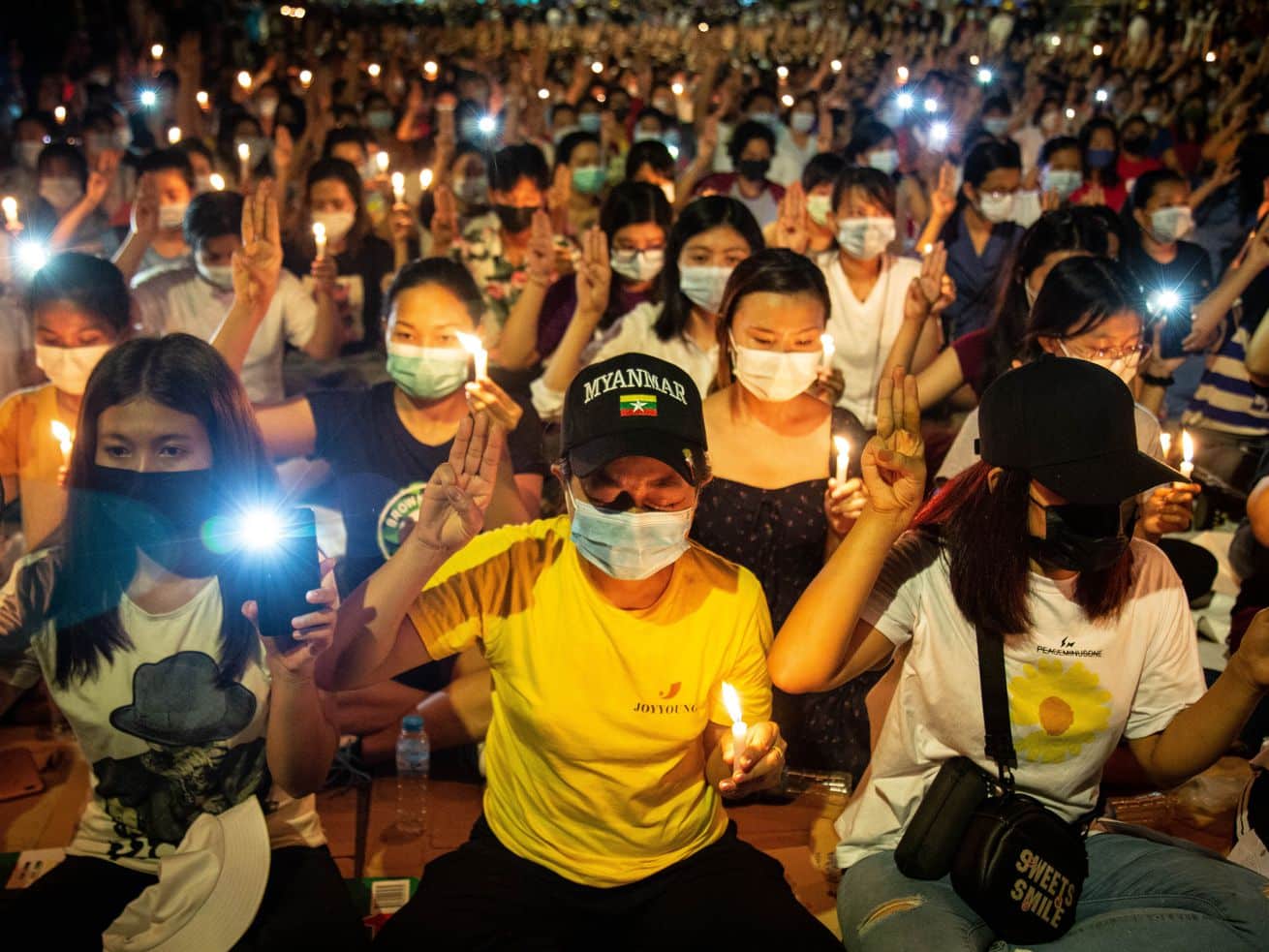Security forces are firing live ammunition on sit-ins.
Myanmar’s security forces killed at least seven people on Saturday after firing live ammunition at demonstrators protesting the country’s February military coup.
The casualties from the protests — which likely are underreported, experts say — indicate that the country’s military government is not backing down from using lethal force against pro-democracy protesters, despite intensifying condemnations from the international community.
Activists have been demanding the military step aside in favor of a civilian government for weeks, and on Saturday were commemorating the killing of a student in 1988 whose death sparked a rebellion against an earlier incarnation of the military government. That uprising resulted in the deaths of around 3,000 protesters.
In the most recent protests, security forces killed at least 70 people, according to the Assistance Association for Political Prisoners advocacy group.
That number includes the four deaths reported in the major city of Mandalay, where police opened fire on a sit-in protest Saturday, as well as two protesters who were killed in Pyay, where a witness told Reuters that security forces deliberately slowed the arrival of an ambulance. Another protester was killed in the suburbs outside Yangon, Myanmar’s largest city. Beyond these deaths, several injuries were also reported.
According to the Associated Press, the death toll is likely higher because police were seen seizing bodies and security forces occupying hospitals are often “boycotted by medical personnel and shunned by protesters.” Despite police violence, rallies and vigils carried on after dark in Yangon, Mandalay, and elsewhere.
Since the February 1 coup, mass demonstrations have swept the country, and resistance to the military has taken many forms, from massive marches to civil disobedience to work stoppages to suspected sabotage of railway infrastructure.
While protester deaths contributed to the decline of the protests in 1988, some activists have said the present killings have only strengthened their resolve; following a recent spate of violence, a protester who asked to be identified as Yan told the Washington Post the shootings were making protesters “angrier.”
And protesters have also had encouragement from the acting leader of the deposed civilian government, Mahn Win Khaing Than, who on Saturday told supporters from hiding: “This is the darkest moment of the nation and the moment that the dawn is close.”
Mahn Win Khaing Than continued, “In order to form a federal democracy, which all ethnic brothers, who have been suffering various kinds of oppressions from the dictatorship for decades, really desired, this revolution is the chance for us to put our efforts together.”
It’s unclear what direction the protests will take in the future. But at the moment, the demonstrations have brought more international attention to the country’s excessive use of force and subversion of even nominal democratic norms.
Why Myanmar is in crisis
On February 1, Myanmar’s military ended the country’s “decade-long dalliance with democracy,” as Vox’s Alex Ward put it, by claiming that the country’s recent election had been marred by fraud. Military leaders then used that claim as a pretext for launching a coup against the nation’s most popular political party and its leader, ending a system of government in which the military shared power with civilian leaders.
While neither the country’s Union Election Commission nor international observers found evidence of irregularities which would’ve changed the outcome of the elections — in which Aung San Suu Kyi and her party, the National League for Democracy, won by an overwhelming margin — the military declared it would hold power for a year before allowing elections in a year.
As Ward has explained for Vox, the military appears to be attempting the reversal or slowdown of modest pro-democracy reforms in order to ensure they don’t lose too much power to civilian government:
The military ruled the country for decades until 2011 when it made very modest pro-democracy reforms. And it only ceded some control after years of political and economic pressure from the United States and other nations.
But that quasi-democratic system no longer worked for the generals, who feared their ultimate authority would be curtailed. So instead of letting Myanmar’s budding democracy continue to grow, the armed forces chose to quash it.
Myanmar’s military has since been condemned by international human rights watchdogs and countries across the world.
The US has applied pressure to the country’s military — which has ties to China — as part of a bid to project power and bolster allies in the region.
India, Japan, Australia, and the US released a joint statement on Friday calling for the country to end the coup. “As longstanding supporters of Myanmar and its people, we emphasize the urgent need to restore democracy and the priority of strengthening democratic resilience,” the statement read. And the Association of Southeast Asian Nations, of which Myanmar is a member, recently “called on all parties to refrain from instigating further violence, and for all sides to exercise utmost restraint as well as flexibility.”
Violence against protesters seems to have motivated some punitive steps by other countries in the region. South Korea, for example, has said it will ban arms exports and reconsider development aid to Myanmar due to the country’s use of force against protesters.
Author: Zeeshan Aleem
Read More



